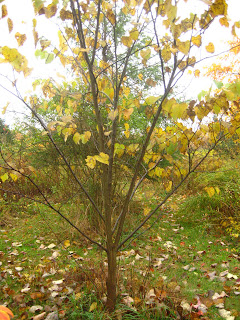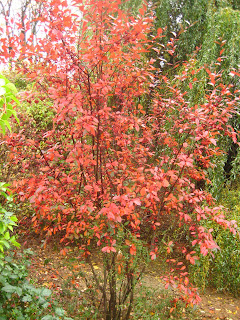Tired of going through your days "feeling like crap", feeling older than your years? Do you feel you are constantly pushing off your work-out program because other obligations of seemingly higher priority keep popping up and by the end of the day you are too tired to care?
For years I had been a faithful follower of Vinyasa yoga and swore by it for helping me cope not only with Lupus aches and pains but also for the "me" time I needed in dealing with stress. Life itself can be stressful, so the best thing is to not let things that bother you build to the point you are a tightly wound knot. Use the gentle movements of yoga to stretch out those knots. Lengthen the spine, relax the muscles, rotate the joints, free the mind. All of these will help release tension, physically and mentally, and you may notice a reduction in back pain and headaches. The hardest part may be to carve out a private hour at least twice a week to be left alone. Consistency is the key to yoga. Everyone starts with baby steps but if you stick with it you'll be amazed how your body just seems to open up. Once on that mat, something magical happens.
Vinyasa means "breath-synchronized movement," and Vinyasa yoga is a series of poses that will move you through the power of inhaling and exhaling. Vinyasa movements are smoothly flowing and almost dance-like, which explains why it is sometimes referred to as Vinyasa Flow or just Flow.
Vinyasa Flow began as Ashtanga Vinyasa Yoga by a Yogi named Sri Tirumala Krishnamacharya. He was given a place to teach yoga and eventually taught a young boy named Parrabhi Jois his learnings on the power of breathing. Jois then established an institute for practicing the specific form of Vinyasa yoga. Like all styles of yoga, Vinyasa has both mental and physical benefits. Physically, sweat expels toxins and re-energizes your body. Mentally, the synchronized breathing relaxes your mind and helps to release any blockage of energy flow throughout your body.
No matter what your age or physical fitness level, yoga is a wonderful and rewarding addition to your routine. Make it not only a form of exercise but a lifestyle. The point of yoga is not to contort yourself into positions you fear will cause injury, or mean you are somehow now associated with a particular religion. It is meant to move the body and breath so you learn to calm the mind, release tension, stretch your spine, and overall, better handle stress.Yoga is a program you can do in the privacy of your own home, year round, at your own convenience, as well as offered at many locations for those of you who enjoy the company of others to keep you motivated. Ideal for beginners because you can adjust the movements and build on them to eventually reach more of a personal challenge.
Those of you suffering from an autoimmune condition such as Systemic Lupus or Rheumatoid Arthritis may find it more of a challenge than ever because more likely than not, you are dealing with pain on top of just the lack of energy and time to stick with a program.
 The
first misconception you have to get past is that yoga involves pretzel
like motions impossible for people who already have difficulty with
flexibility. One of the most important things all of us, whether you have a chronic condition or not, is to realize the importance of movement and proper breathing techniques. You have to
work through the stiffness or like any machine you'll lock up
altogether. It may take everything you've got to start and then
actually finish the session, but once done you'll realize it is a good
hurt. Learning about the importance of better posture, proper breathing, and a stretched out back will greatly benefit you in dealing
with pain management. Many people don't breathe properly. The tendency is to shallow breathe, especially when upset. Learn to deeply inhale, lifting the diaphragm as you fill those lungs to capacity and exhale slowly.
The
first misconception you have to get past is that yoga involves pretzel
like motions impossible for people who already have difficulty with
flexibility. One of the most important things all of us, whether you have a chronic condition or not, is to realize the importance of movement and proper breathing techniques. You have to
work through the stiffness or like any machine you'll lock up
altogether. It may take everything you've got to start and then
actually finish the session, but once done you'll realize it is a good
hurt. Learning about the importance of better posture, proper breathing, and a stretched out back will greatly benefit you in dealing
with pain management. Many people don't breathe properly. The tendency is to shallow breathe, especially when upset. Learn to deeply inhale, lifting the diaphragm as you fill those lungs to capacity and exhale slowly."Challenge your limitations while remaining sensitive to them." That is a statement by expert and teacher of Ashtanga Yoga, Baron Baptiste. His methods utilize the 'flowing of postures' which create heat and energy. His techniques help our minds and bodies release accumulated tensions and open pathways of blocked energy, allowing life's energy to flow freely through every part of our being. For improved health it is paramount to open up those pathways which will increase the flow of oxygenated blood to our organs. The opening up of the spine helps release those everyday stresses we soak up like a sponge. Discover the relief found with what is called "meditation in motion". Baron Baptiste stresses the importance of taking care of what he calls fragile creatures... the knees, neck, and back. Ask any physical therapist and it is very likely they will tell you those areas are very often the ones needing treatment.
Baron Baptiste wrote a book, "Journey Into Power" which came out in 2002. This inspiring program helps you to lose weight, increase your physical and mental strength and stamina, and develop an inner sense of calm composure. Known as 'The yoga master for the stars', his gentle approach is as apparent on his DVD workouts as is evident from the book. Power Vinyasa yoga is described as meditation in motion. Poses are not the complicated twists often associated with yoga. His gentle, encouraging voice guides you along every step of the way, with alternatives for the harder moves.
There is the website http://www.baronbaptiste.com with an abundant source of activities and information, but if all you want is the exercise dvds, they can be found on shopping sites such as amazon, ebay or google, Available are a number of great dvds and even vhs tapes from back in the 1990's that are from beginner to intermediate. Below are a few of my personal favorites.
 |
| Baron Baptiste Foundations of Power Vinyasa Yoga |
 |
| Baron Baptiste Soul of Strength |
 |
| Power Yoga level 2 The Next Challenge |







































